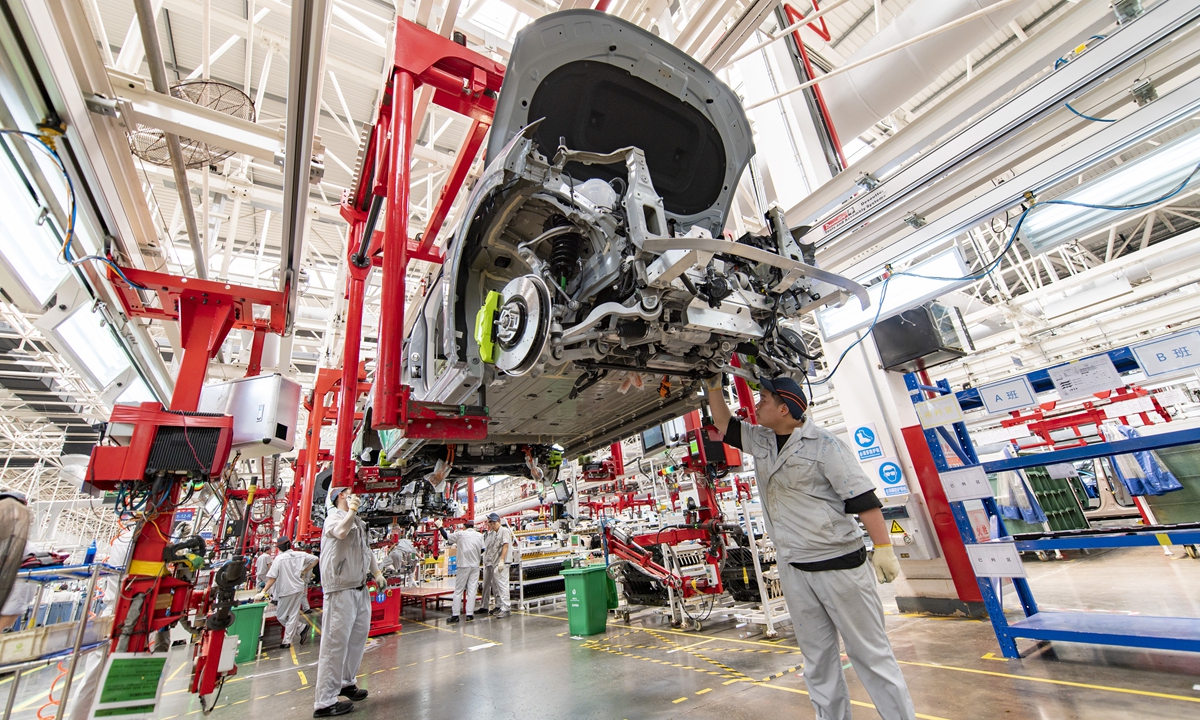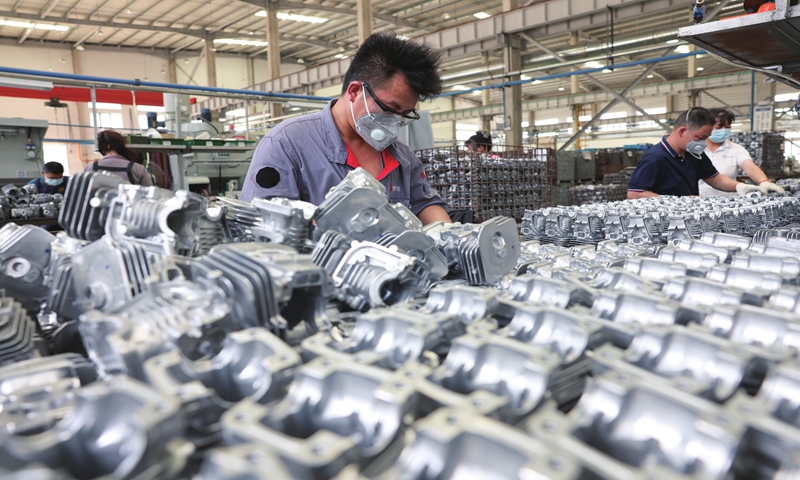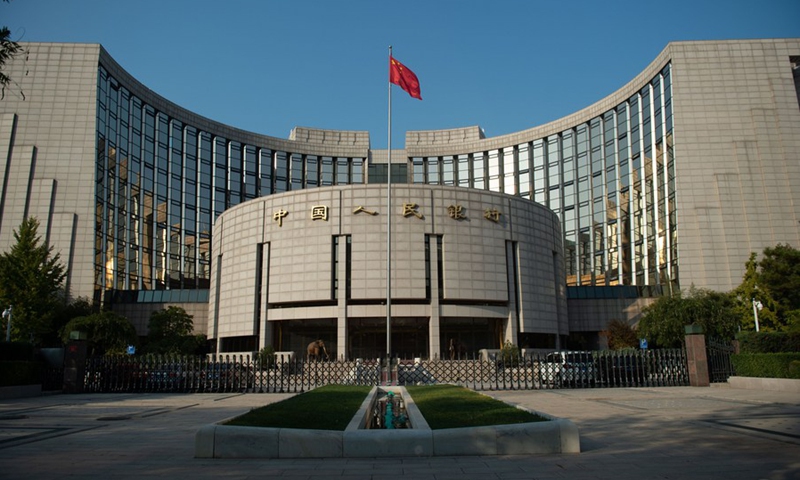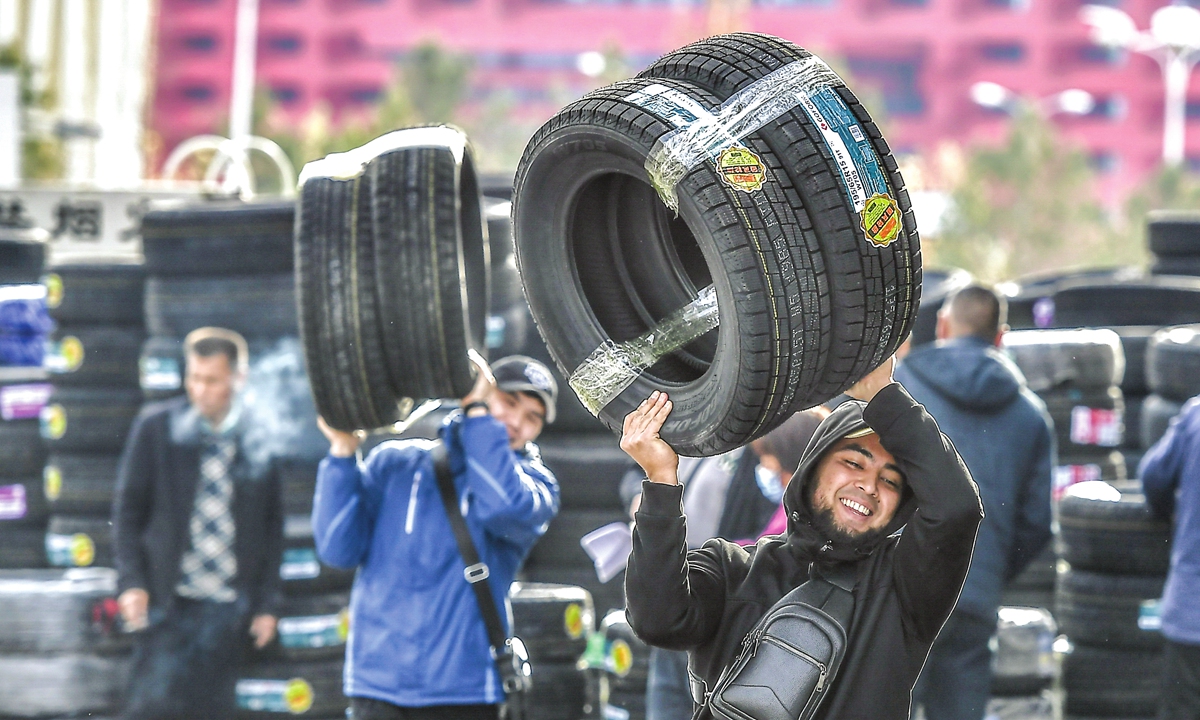
Workers are busy at a production line of new-energy vehicles (NEVs) in Jinhua, East China's Zhejiang Province on July 2, 2024. The volume of NEV production is rising driven by growing demand. Zhejiang is striving to produce more than 1.2 million NEVs annually, or more than 60 percent of the province's total automobile production, by 2025, and its NEV output will account for about 10 percent of the country's total. Photo: VCG
The volume of newly registered new-energy vehicles (NEVs) in China hit a record of 4.397 million by the end of June, 2024, surging 39.41 percent year-on-year, according to China's Ministry of Public Security (MPS), reflecting steady growth in the nation's NEV sector.
China's well-developed transport infrastructure, affordable cost of driving an NEV and multiple favorable policies constitute a solid foundation for this significant growth, Wu Shuocheng, a veteran automobile industry analyst, told the Global Times on Monday.
In terms of market performance, domestic NEV retail sales volume in the first half of 2024 hit 4.111 million, up 33.1 percent year-on-year, according to preliminary statistics released by the China Passenger Car Association (CPCA) on Monday. In June only, NEV retail sales volume stood at 856,000, an increase of 28.6 percent on a yearly basis.
In the first half of 2024, major Chinese car manufacturers reported significant growth in sales, further showcasing the country's vitality in the sector's development. Analysts attributed the growth to strong government backing, growing competitiveness and continuously improving facilities.
From January to June this year, BYD sold 1.61 million NEVs, recording a year-on-year increase of 28.46 percent. The company sold 341,658 units of NEVs in June alone, up from 253,046 compared with the same period in 2023, the company said in a filing earlier in July.
China's Ministry of Commerce (MOFCOM), Ministry of Finance and five other government departments issued on April 26, 2024 an action plan for automobile renewal and trade-in. As of 12 pm on June 25, MOFCOM has received about 113,000 applications.
The implementation of the government policy support further spurred the consumption potential from May to June this year, and drove the strong NEV market growth despite external uncertainties and insufficient internal demand, according to a CPCA WeChat post released on Monday.
The European Commission confirmed provisional import tariffs on a couple of Chinese EV manufacturers starting from July 4, 2024, despite strong oppositions from government officials and major industry players within the bloc, but observers said the barriers will not stop China's advancement in its NEV sector.
Amid competition in domestic market and signs of trade protectionism in some Western countries, more Chinese auto makers are eyeing market expansion in Southeast Asian countries.
Southeast Asia is one of most important emerging markets for Chinese automakers, which has large demand for cheap transport vehicles and has no trade protectionism against Chinese products, said Wu.
BYD on Thursday inaugurated the completion of the company's manufacturing factory in Thailand, which was completed in only 16 months with an annual capacity of 150,000 vehicles.
Guangzhou Automobile Group Co's NEV brand Aion recently announced that its smart ecological plant in Thailand will be completed in the middle of July 2024, and vowed to promote the development of Thailand's auto manufacturing industrial chain with a local advanced supply chain.
Global Times



